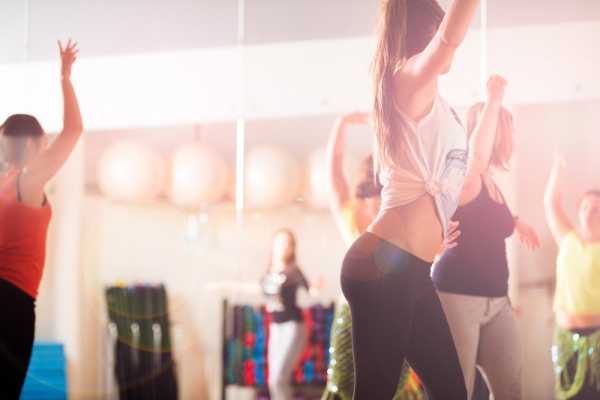Whether you found yourself in a ballet class at a young age or simply grabbed your teddy bear to move with Beauty and the Beast, most women have found themselves enthralled by dance at some point in their lives. Dance is a universal language that every culture shares. Exercise, therapy, art – dance encompasses all of these things. So even if you do not find yourself pulling on tights and ballet slippers, dancing can be a marvelous hobby to take up.
Maybe you saw an ad for an adult beginner ballet class in the local newspaper and want to give it a try. Or maybe you have been eyeing that dance fitness class at the gym. Do not let uncertainty impede from having a fun time or discovering a new passion. Dance is for anybody. You do not need to be a prima ballerina to enjoy moving to music.
The Pros
- Physical activity with varying degrees of intensity
- Endorphins
- Release stress
- Therapeutic
- Tons of styles to try
- Various types of classes to try
- Boosts creativity
Dance has a plethora of genres influenced from every corner of the globe. Classical and Modern Ballet, Jazz, Contemporary, and Hip-Hop are the mainstays, but we can’t forget Tap, Bellydance, Pole dancing, Burlesque, Swing and Ballroom dancing either.
Most dance studios offer adult versions of these classes with several levels based on how much you know. To know whether or not you are getting the best instruction, look to the education of the instructors. Accredited programs like Dance Masters of America or college degrees are excellent signs of someone who can teach ethically.
There are the ‘dance fitness’ classes popping up in gyms everywhere. Zumba or CiZE, for example, are wonderful outlets that simultaneously sculpt your body while incinerating calories.
Read also – 8 Popular Types of Dance to Try
In a therapeutic sense, dance can help you overcome stress or other disorders – both mental and physical. There is a facilitation of the mind-body connection with dance often seen present in a yoga class. Because dance is often defined as the expression of an abstract idea, you can vocalize your issues without ever actually speaking about them.
Dance therapy classes are used to provide people with outlets from eating disorders, depression, autism, anxiety, PTSD, and physical disabilities. But if you can’t find a dance therapy class, heading to Zumba or Adult Jazz can have the same effect.
I can attest to the healing powers of dance. Having suffered from an eating disorder and depression, as well as an autoimmune disorder, in my late teens and early twenties, I turned to dancing as an outlet for the intense pain I felt.
Whenever I danced the way I felt, a burden was lifted from my shoulders. I saw and felt things more clearly and could sort through the issues I was dealing with. The low intensity movement healed my famished body. I could also tap into the femininity that I thought I’d lost.
In case you need some more convincing, here is a list of dancers who were saved by their art:
- Eugene Louis Faccuito, also known as Luigi, the Ambassador of Jazz
- Evgeny Smirnov and Jean Sok are both one-legged breakdancers
- Mikayla Holmgren, the ballerina with Down Syndrome
- Sudha Chandran
- Anna Halprin, who literally “danced her cancer”
- Steve Paxton
- Nancy Stark Smith
- Deborah Roach, the one-armed pole dancer
Through dance, these people and many others out there have overcome serious hurdles in their lives.
Now, before you go purchasing some split-sole sneakers and sign up for street dancing, take a moment to consider the down sides.
The Cons
- Can be dangerous for those not physically fit
- Can cause self-esteem issues, especially in younger dancers who may not look like the rest of the class or have troubling picking up choreography
- Money – a month of dance classes can run anywhere from $150 to $400, depending on what you are doing.
Wait a second. Didn’t I just say that dance is for everybody? Yes, I did. But there is something I can’t preface enough. Just like you can’t expect to go into the gym and start Olympic power-lifting without some proper guidance, you should not waltz into just any dance class.
You need to consider your fitness level or any previous injuries that may alter the way you move. Though this is more of a precaution for dance studio classes focusing on technique rather than a workout, put the caveat in the back of your mind for fitness classes as well.
Is the instructor warming up your body appropriately? Are you being forced into positions that cause you pain? When you leave that class, are you feeling refreshed or ill? If you find yourself giving the negative response to these questions, then it is not the class for you.
There is a difference between sore muscles and true pain. Anything that stresses the ligaments, tendons and joints can cause havoc to your physiology. Keep that in mind for children as well.
Read also – 9 Simple Ways to Fall in Love with Your Body Again
Not only do you burn calories dancing, you can overcome mental and physical hardships. Through rhythmic motion, we can connect not only to ourselves but to others. It does not matter who you are, because dance is an energy that dwells within every soul.
Even if you have two left feet, this artistic expression of self boasts some serious health benefits. One step forward and one step back does not mean you made a mistake, you are just dancing the cha-cha.

